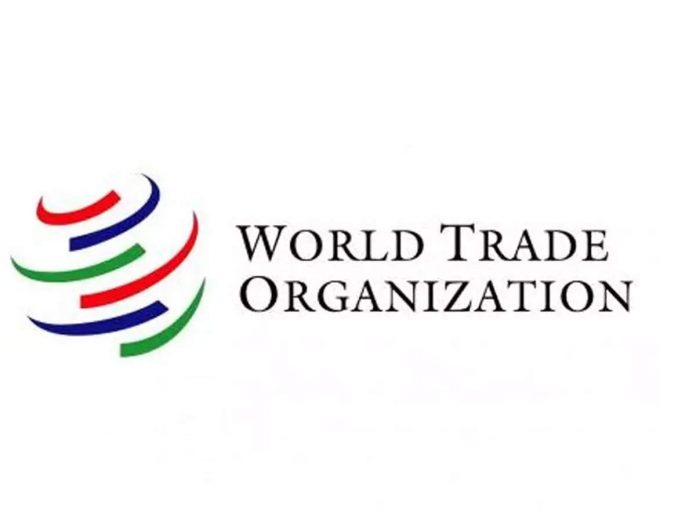This article is written by Khyati Basant, from Symbiosis Law School, NOIDA. This article consists of a description of food securities under the world trade organization and the free trade agreement.
Table of Contents
Introduction
Demand for food has gone up in developing countries with high population growth. It has stabilized in developed countries. Farm technology has greatly improved in developed countries, while it has stagnated in developing countries. Thus, food prices have typically risen in emerging countries, and those in developed countries have reduced. Declining food prices in developed countries have lowered farmers ‘ incomes. The government sought to raise farmers’ rates. This brought more output and surplus. Those countries are typically exporters. Rising food prices in developed countries have hurt consumers or other industry staff. The government has been trying to lower food prices. This not only the income of the farmers but also the output.
Developing countries tend to be food importers. Food security comprises the accessibility and affordability of food. Economic development and/or infrastructure construction are crucial to addressing a food shortage. The housing of food stored for a rainy day or extension of the world food supply is a safer way of coping with the problem. Maintaining agricultural capital, including water and soil, serves the purpose of global food protection.
World Trade Organisation
During the WTO Agreement, 2001 on Agriculture talks, India raised questions about food security and stability that developed nations need to provide when it comes to providing subsidies to main agricultural inputs. Years have elapsed since then and countries such as India are still waiting for a lasting compromise on food security and the keeping of public stocks to meet the WTO. It is a matter of establishing fundamental values of pro-people governance in a civilized society and of giving supremacy to values of human rights. Global corporations believe trade is the key to resource control and resource capital is the key to policy control. Thus, the need for such a trade forum was felt in which governments of all countries could be brought together and such mechanisms could be created that could facilitate the easy entry into any country of powerful capitalist groups, prevent any significant control of their activities, and keep low duties and taxes on these mega-corporations so that they can accumulate profits.
Food safety
When people have access to sufficient, safe, nutritious food to maintain a healthy and active life, they are considered “food secure.” Work at the WTO on food security takes place within the Committee on Agriculture. As proposed by the United Nations High-Level Task Force on the Global Food Security Issue, of which the WTO is a member, the WTO also provides expertise to an Agricultural Sector Information Network (AMIS). Since 2013 WTO members have agreed to negotiate and find a permanent solution to the issue of food security public stockholding programs. Developing nations buy and store food under these schemes, and deliver it to those in need. Any of these services, however, require funding for producers and are therefore perceived to hinder trade.
A widely accepted concept of food protection is that “everyone has physical and economic access to adequate food at all times to fulfil their nutritional requirements for a prosperous and balanced life” (USAID, 1992). Food protection also refers to freedom from starvation and chronic malnutrition, which includes the provision of regular and annual means for the person or family or country to meet adequate nutritional needs. There are three key dimensions of food safety that need attention. Which are healthy food supply, food quality, and food use? Food insecurity is a person, family, group, or country that has lost or is at risk of losing either of those dimensions. Food insecurity may be temporary or chronic and may be mild or acute.
The global food crisis in 2008
In April 2008, in the aftermath of spiralling food prices, the WTO joined a high-level task force on the global food security crisis. The task force, headed by the Secretary-General of the United Nations, consists of members or other leaders of 22 foreign bodies, including the WTO and other UN Secretariat groups. In July 2008, the Task Force developed its first framework of action outlining its strategy and guiding principles and adopting a comprehensive approach to food safety — covering food availability, access, stability, and use. The system was revised in September 2010, to address a broader variety of concerns and more detailed coverage of all areas of food security and nutrition. The WTO Secretariat and other organizations that were part of the task force contributed to the creation of the system.
Food policy in India
The policy framework emphasizing the production of food grains was instrumental not only in accelerating the rate of agricultural growth but also in achieving reasonable successes in reducing food insecurity in many Asian countries such as India, China, Indonesia, Malaysia, Thailand, and Pakistan. The development of agricultural policies in most developed countries was largely driven by the need for food security for increasingly growing populations. The need for governments to take a leading role in improving food security in many developing countries arose from the low level of production, particularly of food grains, perceived inadequacy of normal market forces to generate surpluses at a rapid rate, and low mass buying power. However, policies that prioritized export crops rather than food grains in many African countries resulted in acute deficiencies in domestic cereal production and food shortages.
Before independence in India, the policies were aimed at maintaining popular support for colonial rule rather than long-range food production base development (Knight, 1954). After the Bengal Famine of 1943, the active involvement of the government in the matter of food was acutely felt. However, the policy’s focus was on regulating the prices of food grain. Particularly after independence, the key goal of food policy was to keep the cost of living in a place for about a decade. Several committees were appointed and measures aimed at controlling food prices were initiated as recommended by them. India imported about 16 percent of the net availability of food grains during the mid-sixties. That period has been a turning point in India’s approach to food security. In addition to increasing dependence on imports to meet food needs, two severe consecutive years of drought have resulted in the launch of a new agricultural development strategy to increase foodgrain output. India imported considerable quantities of cereals in the fifties and until the mid-sixties, as the main concern of the food policy was to ensure that the gap between demand and supply did not result in the excessive rise in consumer prices. The strategy was focused on understanding that there are three pillars for developing a strong agricultural economy:
- Providing farmers with an improved technology package;
- Establishing an effective mechanism for supplying inputs and services like credit;
- Ensuring rapid market clearance; and providing farmers with a remunerative demand climate.
The Food Corporation of India (FCI) was set up as the single State agency for the procurement, collection, transportation, and distribution of food grains. At the same time, the Agricultural Prices Commission was set up to advise the government on issues relating to agricultural price policy in the light of the need to increase the production of agricultural commodities, particularly food grains, and to provide consumer relief. To achieve the stated objectives a large number of policy instruments have been used. Occasionally, the policy and the instruments were reviewed.
National Food Protection Act
On September 10, 2013, the Indian Parliament passed the National Food Protection Act, intending to provide food and nutrition protection by ensuring access to sufficient quantities of quality food at reasonable rates. The Act provides for up to 75% of the rural population and up to 50% of the urban population to receive subsidized food grains under the Targeted Public Distribution System (TPDS), covering about two-thirds of the population. The Act also places particular emphasis on nutritional support for women and children. In addition to meals for pregnant women and lactating mothers during pregnancy and six months after childbirth, these women will also be eligible for maternity benefits of no less than 6,000 Rs. Children up to age 14 will be entitled to nutritious meals following the prescribed nutritional standards.
India continues to face an immense burden of extreme poverty and childhood malnutrition: about 195 million people struggle with daily poverty, 38.4% of infants are stunted, 58.4% of adolescents and 53% of women in the reproductive age group are anemic. On the other hand, after WTO was established 333,000 farmers in India committed suicide because they are not safe on the local and global market. They have been affected by the extreme weather conditions, non-remunerative prices, and the Green Revolution adverse effects.
In India, the push towards the abolition of the public distribution network has already started to reduce the subsidies given to farmers under the food security act. All the ration shops in Chandigarh and Puducherry have been closed, according to information provided by the Ministry of Consumer Affairs, Food, and Public Distribution at Lok Sabha (Parliament’s Lower House of India) on July 25, 2017. These two union territories were used for allocating 91,584 tons of food grain to 857,000 consumers for distribution. This was stopped from 2017-18 and replaced by direct cash transfers so that people can use the ‘cash’ to buy goods from open markets of their choice. If the central government stops buying food grains for public storage from the farmers and also stops distributing them through the public distribution system, then the country’s food security will come entirely under clutches of corporate interests.
Aim of WTO and Food Security
- The Indian government not only fixes a minimum support price (which is still quite low and unprofitable for farmers) but also buys wheat, rice, sugar cane, and even farmers’ pulses now. This protects farmers from the clutches of corporations like this and global traders.
- The government retains power over agriculture because of this approach, which in effect prohibits multinational companies from playing a central position in this regard. There is a continuing debate in the WTO that these ‘poor’ subsidies (called ‘price distorting subsidies’) should be reduced because they impact price activities directed at the benefit of large dominant companies. There was a provision that government subsidies can not exceed 10 percent of gross agricultural production. There are discussions of taking measures against countries where subsidies reach this amount, including trade sanctions.
- By setting minimum support prices for agricultural products by the government, according to the influential developed countries, controls the prices of these products, which in turn limits the profits of large corporate houses.
- Not only does the government buy agricultural products and food grains, but it also supplies them to two-thirds of the population—840 million people at subsidized rates through the public distribution system. Because of this, the large corporations are deprived of potential customers and, at the same time, the poor are also protected from exploitative prices. This also ensures food security in those states where adequate quantities of food grains are not produced.
Free Trade Agreement
A Free Trade Agreement ( FTA) or treaty is, under international law, a multinational agreement to form a free trade area between the cooperating states. FTAs, a component of trade pacts, specify the tariffs and duties that countries place on imports and exports to reduce or eliminate barriers to trade, thus promoting foreign trading. Such agreements usually “are centered on a chapter providing for preferential tariff treatment”, but often also “include clauses on trade facilitation and rule-making in areas such as investment, intellectual property, government procurement, technical standards and health and phytosanitary matters”.
Global food security concerns have also been viewed in the past as being the responsibility of leading developed nations, UN governments, and multinational non-governmental organizations. This global landscape is changing – newly emerging countries (Brazil, China, and India in particular) are now undernourished. They have experienced rapid economic growth in recent years, boosting their trade with the global economy. The impacts of policies undertaken in these countries to combat poverty and hunger, and to boost production and trade affect millions of lives.
Trade and food security in India
For much of the 1970-1990 period, government assistance to the agricultural sector dropped compared to the manufacturing sector due to overvalued exchange rates and high levels of security extended to the manufacturing sector by a mix of tariff and non-tariff policies. In the face of rising crude oil prices and declining foreign exchange reserves, a program of economic measures was introduced to help get through the June 1991 balance of payments crisis.
Main reforms included the devaluation of the Indian rupee, lowering rates of security in the manufacturing sector, and liberalizing the agricultural export market. As a result, foreign-exchange reserves began to build up, and trade increased with the gradual elimination of trade restrictions and the licensing system. India is a large country with a population of over one billion. The nation has made tremendous economic growth since its independence in 1947 and has shown growing resistance to external disruptions, such as the global food, fuel, and financial crisis. However, the agriculture sector has not performed well in the economy as have other sectors. Agricultural production has stayed below the 4 percent goal limit.
Results indicated that an FTA will result in an increase of about US$ 5 billion in India’s gross domestic product (GDP) in 2015, and is set to increase further to US$ 50 billion in 2030 (equivalent to 0.7 percent of Indian GDP). The effect of an FTA on the EU economy is expected to be small. A free trade agreement will result in India increasing its EU imports by just over 50 percent, with the highest increases in processed food products. The expectation is that increased exports from India to the European Union will come mainly from the manufacturing industry.
There are benefits to participating in an Indian-EU FTA. Findings showed that an FTA is more favorable to Indian rural households due to the extra income received, while a WTO deal would help those living in urban areas more. In terms of pay, under an Indian EU-FTA system, rural unskilled laborers are expected for the most benefit. However, overall, both FTA and WTO allocate income from rural rich households to poor and middle-income households. Despite the huge foreign-exchange reserves and the opportunity to play on international markets, India is hesitant to free up its grain market entirely. This is linked to fears on the part of policymakers that the domestic market will be flooded with imports with the liberalization of agricultural trade-but that has not happened so far. Besides, India has followed a price stability strategy by shutting its wheat and rice markets to peak world market prices. Indian wheat and rice producers, however, have been forced to raise minimum prices while subsidizing consumer prices.
India’s agricultural sector is becoming more diversified and increasing its share of high-value commodities like horticulture, livestock, and marine products. While exports of these high-value commodities have been increasing for some time, India remains a small player on the global market. The analyzes suggest that India would benefit significantly if more focus is given to stimulating the participation of the private sector in combination with major investments to improve infrastructure and technical advances, particularly in the seed and processing market. These improvements, if implemented, will help increase export levels, address food insecurity in the country and lift a large segment of the population from extreme poverty.
Conclusion
India badly needs to increase its domestic support basket under current circumstances and substantially increase the Minimum Support Price and include pulses and edible oil in the National Food Security Act. To ensure livelihood and food-nutrition security, it needs to provide incentives to promote millet production, pulses, and edible oil. In such a case, if anything close to the “Unity Clause” plan is adopted, the situation will get worse. Ideally, the agrarian economies should call for food security to be removed from WTO negotiations.
References
- https://www.downtoearth.org.in/news/economy/why-india-needs-to-fight-for-food-security-at-wto-59310
- https://www.wto.org/english/tratop_e/agric_e/food_security_e.htm
- https://www.thehindubusinessline.com/economy/agri-business/india-faces-food-security-hurdle-in-wto/article9960550.ece
- https://books.openedition.org/editionsmsh/7556?lang=en
- https://edepot.wur.nl/328140#:~:text=A%20free%20trade%20agreement%20will,increases%20in%20processed%20food%20products.&text=On%20the%20whole%2C%20however%2C%20both,poor%20and%20middle%20income%20households.
LawSikho has created a telegram group for exchanging legal knowledge, referrals and various opportunities. You can click on this link and join:
 Serato DJ Crack 2025Serato DJ PRO Crack
Serato DJ Crack 2025Serato DJ PRO Crack










 Allow notifications
Allow notifications



